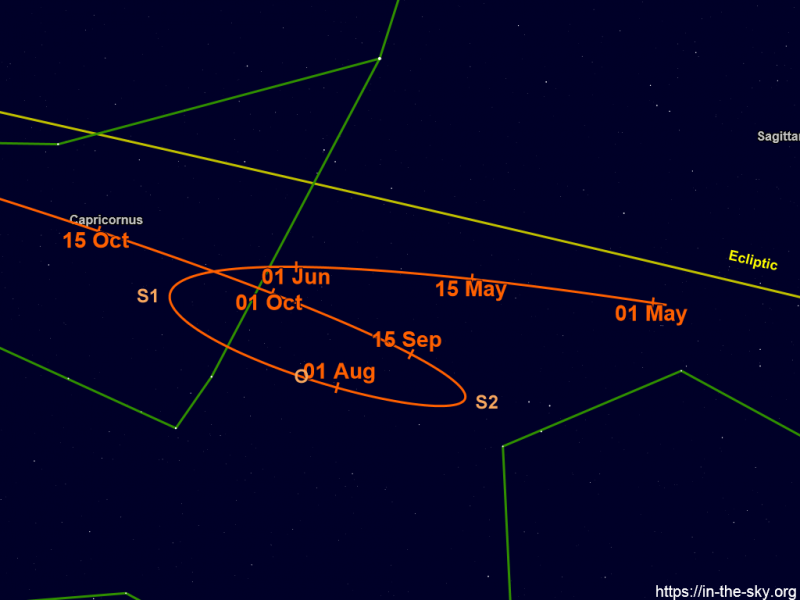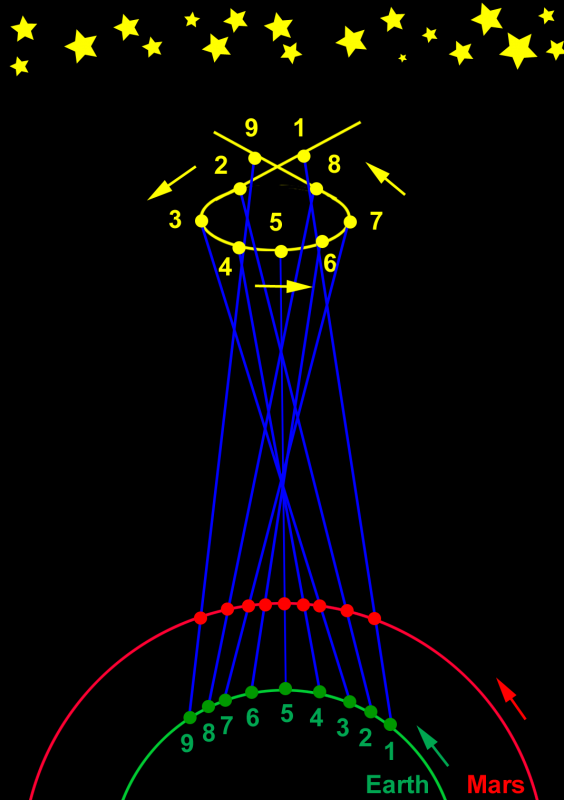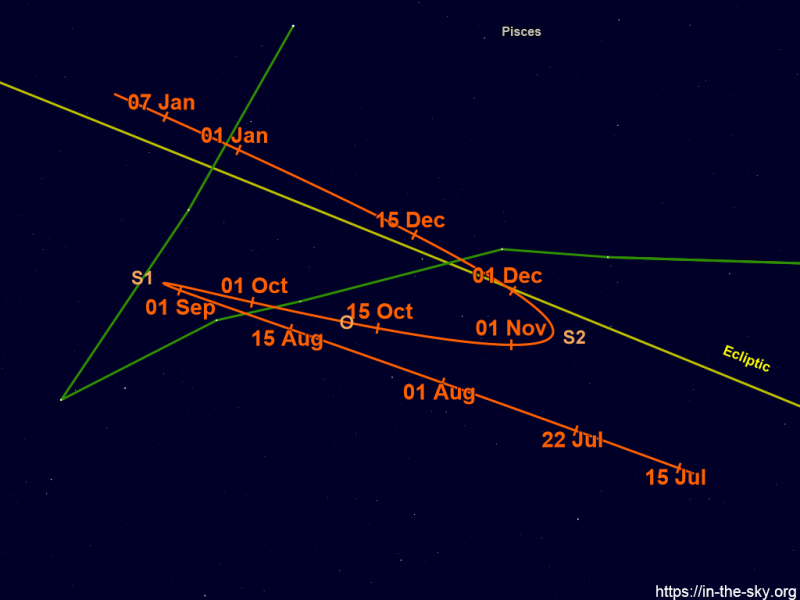2020 April 9
Loops in the sky
Introduction
Loops

Figure 1 shows the path of Mars for part of 2018. Starting at the right hand side of the image the planet moves eastward, gradually slowing down until on June 28th it stops at S1 where it reverses direction. It then tracks westward for a while before slowing down once more, stopping on August 28th at S2 and resuming its normal eastward motion.
The motion towards the East is the normal apparent motion of an outer planet and is known as direct or sometimes prograde motion. The motion towards the West is referred to as retrograde and the points where it is stationary are unimaginatively known as the stationary points! Notice that opposition on July 27th occurs in the middle of the retrograde motion.

The Earth, on the ‘inside track’, catches up with Mars. From positions 1 to 3 the observed motion is direct. Position 3 is the first stationary point. From there the motion is retrograde through to point 7 with opposition occurring at position 5. Following point 7, the planet resumes its direct motion once more.
A helpful analogy to consider is overtaking a slower car on a dual carriageway. While you are still some distance behind it seems to be passing objects on the horizon in the same direction as you are. As you get closer the speed that this happens slows down. When passing it, with respect to you, it appears to be moving backwards. Once you are well ahead it again seems to be moving forwards with respect to the horizon.
This is all well and good but why do planets appear to create loops rather than straight lines? After all, when you overtake a car on the motorway it does not seem to rise up into the sky and then fall back down again!
The answer lies in the fact that the orbits of the planets are tilted with respect to one another and generally when the Earth overtakes one it does so from ‘above’ or ‘below’. This means that as the Earth’s distance from the planet changes so does the angle at which we see it. The greater the distance the shallower the angle and vice-versa. This changing angle combined with both planets’ motions creates the effect of a loop.

Acknowledgements
To return to the Solar System. Select Here
| The British Astronomical Association supports amateur astronomers around the UK and the rest of the world. Find out more about the BAA or join us. |
